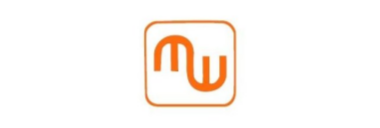Boeing Projects Global Need for Nearly 2.4 Million New Commercial Pilots, Technicians, Cabin Crew
Rhea-AI Summary
Boeing's 2024 Pilot and Technician Outlook (PTO) projects a significant demand for aviation personnel over the next 20 years. The industry will require nearly 2.4 million new professionals to support the growing commercial fleet and meet the long-term increase in air travel. This includes 674,000 pilots, 716,000 maintenance technicians, and 980,000 cabin crew members.
The demand is driven by aviation traffic trending above pre-pandemic levels, personnel attrition, and commercial fleet growth. Eurasia, China, and North America are expected to drive more than half of the new industry personnel demand. South Asia, Southeast Asia, and Africa are the fastest-growing regions, with staffing demand projected to more than triple over 20 years.
Positive
- Projected demand for 2.4 million new aviation professionals over the next 20 years
- Aviation traffic trending above pre-pandemic levels
- Significant growth opportunities in South Asia, Southeast Asia, and Africa
- Two-thirds of new personnel will address replacement due to attrition, indicating industry stability
Negative
- Potential challenges in meeting the high demand for skilled aviation professionals
- Possible increased labor costs for airlines due to high demand for personnel
News Market Reaction 1 Alert
On the day this news was published, BA declined 0.43%, reflecting a mild negative market reaction.
Data tracked by StockTitan Argus on the day of publication.
According to the latest PTO, commercial carriers will need the following new personnel through 2043 to sustain the global commercial fleet:
- 674,000 pilots
- 716,000 maintenance technicians
- 980,000 cabin crew members.
"Driven by aviation traffic trending above pre-pandemic levels, personnel attrition and commercial fleet growth, the demand for aviation personnel continues to rise," said Chris Broom, vice president, Commercial Training Solutions, Boeing Global Services. "We are focused on being a reliable and innovative partner in the lifecycle of aviation training. Our offerings are rooted in competency-based training and assessment programs to help ensure high quality aviation training starting in flight schools and in commercial operations while helping enhance aviation safety through immersive and virtual training solutions."
Through 2043, the PTO projects:
- Demand for new personnel driven primarily by single aisle airplanes, except in
Africa andMiddle East where widebody airplane demand leads. - Eurasia,
China andNorth America drive demand for more than half of new industry personnel. South Asia ,Southeast Asia andAfrica are the fastest-growing regions for personnel with staffing demand expected to more than triple over 20 years.- Two-thirds of new personnel will address replacement due to attrition, while one- third supports growth in the commercial fleet.
The PTO forecast includes these projections for industry needs through 2043:
Region | New Pilots | New Technicians | New Cabin Crew |
Global | 674,000 | 716,000 | 980,000 |
23,000 | 25,000 | 28,000 | |
130,000 | 137,000 | 163,000 | |
Eurasia | 155,000 | 167,000 | 240,000 |
39,000 | 42,000 | 54,000 | |
68,000 | 63,000 | 104,000 | |
123,000 | 123,000 | 184,000 | |
25,000 | 30,000 | 43,000 | |
11,000 | 12,000 | 18,000 | |
40,000 | 40,000 | 49,000 | |
60,000 | 77,000 | 97,000 |
As a leading global aerospace company, Boeing develops, manufactures and services commercial airplanes, defense products and space systems for customers in more than 150 countries. As a top
Contact
Boeing Media Relations
media@boeing.com
![]() View original content:https://www.prnewswire.com/news-releases/boeing-projects-global-need-for-nearly-2-4-million-new-commercial-pilots-technicians-cabin-crew-302201002.html
View original content:https://www.prnewswire.com/news-releases/boeing-projects-global-need-for-nearly-2-4-million-new-commercial-pilots-technicians-cabin-crew-302201002.html
SOURCE Boeing







